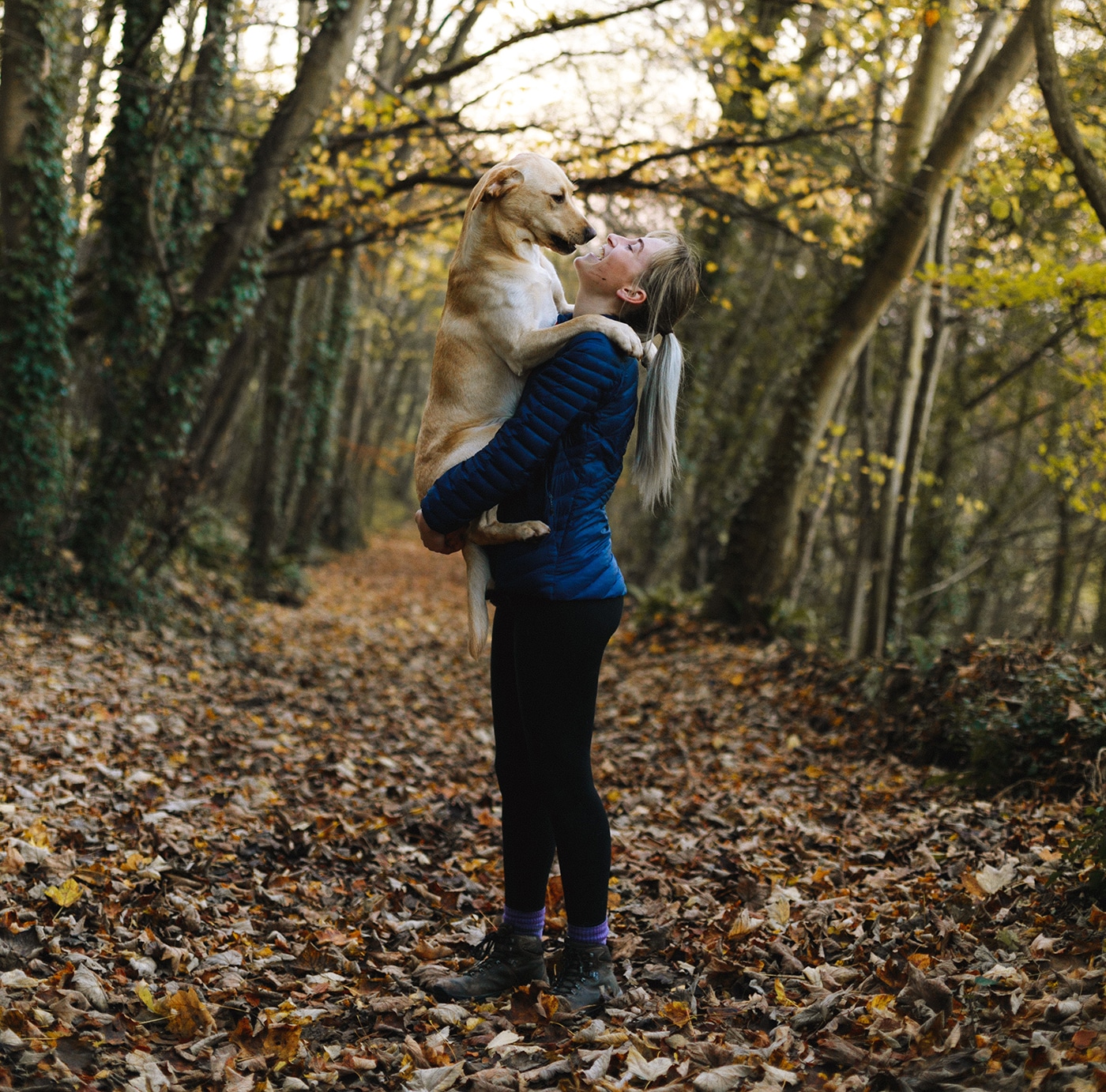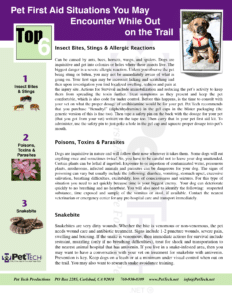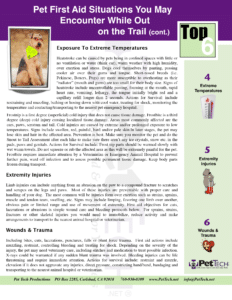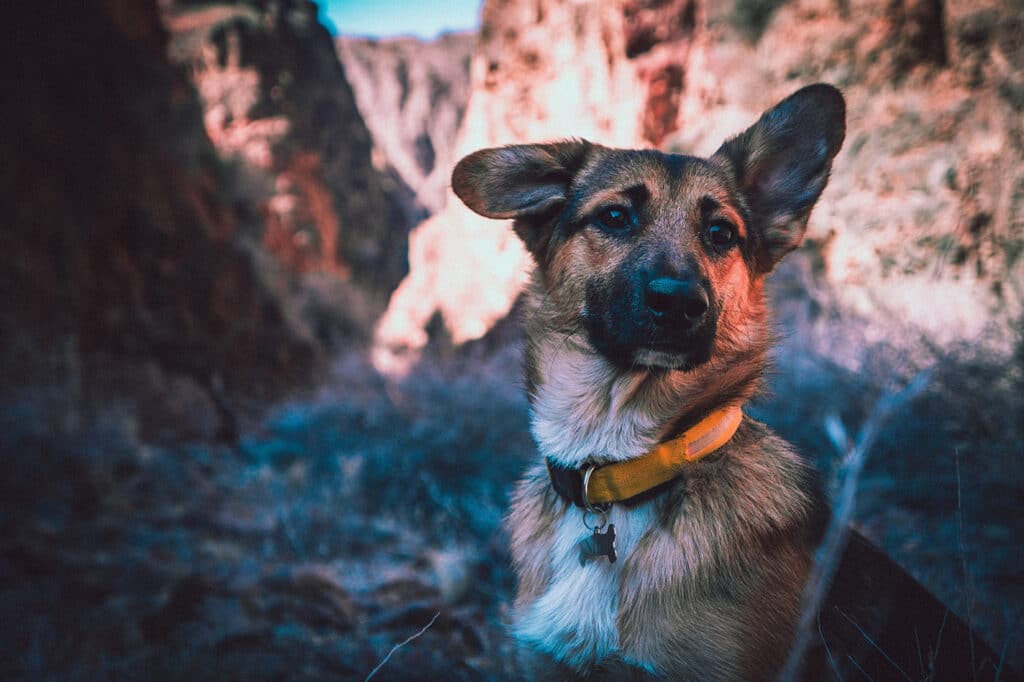
Insect Bites, Stings & Allergic Reactions
These can be caused by ants, bees, hornets, wasps and spiders. Dogs are
inquisitive and get into colonies or holes where these insects live. The
biggest danger is a severe allergic reaction. Unless you observe the pet
being stung or bitten, you may not be immediately aware of what is
going on.
Your first sign may be incessant licking and scratching. Upon further investigation you may find localized swelling, redness and pain at the injury site. The best action to take includes immobilizing your pet and reducing their activity to keep them from spreading the toxin further. Treat symptoms as they present and keep the pet comfortable and under control.
It’s always a sound plan to consult with your vet on what the proper dosage of antihistamine would be for your pet so you know what to do if you ever need to administer it. “Benadryl” (diphenhydramine) can be found in gel caps in the blister packaging (the generic version of this is fine too).
We recommend you label the packaging with the dosage your vet suggests for your pet. Attach a safety pin to the packaging and make sure to carry it in your pet first aid kit. To administer, use the safety pin to poke a hole in the gel cap and squeeze the proper dosage into your pet’s mouth.
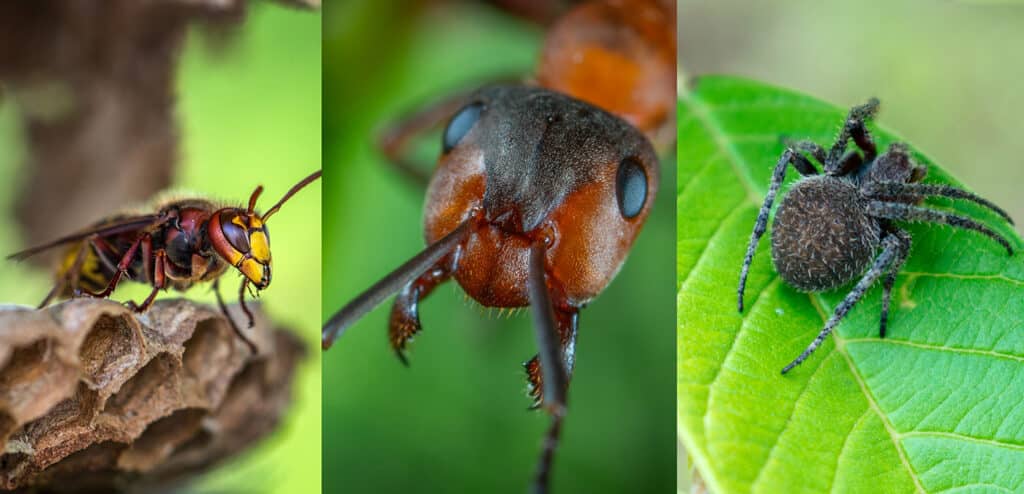
Poisons, Toxins & Parasites
Dogs are inquisitive in nature and will follow their nose wherever it takes them. Some dogs will eat anything once (and sometimes twice)! It’s important not to leave your dog unattended, as certain plants can be lethal if ingested. Exposure to or ingestion of contaminated water, poisonous plants, mushrooms, infected animals and parasites can be dangerous for your dog. View this article for a list of 16 common poisonous plants for dogs. You may very well have some in your yard!
The signs of poisoning can vary but usually include the following: diarrhea, vomiting, stomach upset, excessive salivation, breathing difficulties, excitability, loss of consciousness and seizures.
It’s important to act quickly if you suspect your dog has been exposed to anything poisonous, as they can deteriorate quickly – no breathing and no heartbeat. You will need to identify the following: suspected substance, time exposed and sample of the vomitus or stool, if available. Contact the nearest veterinarian or emergency center for any pre-hospital care and transport your pet immediately.

Snakebites
Snakebites are very dirty wounds. Whether the bite is venomous or non-venomous, the pet needs wound care and antibiotic treatment. Signs include 1-2 puncture wounds, severe pain, swelling and bruising. If the snake is venomous, your immediate actions for survival include restraint, muzzling (only if no breathing difficulties), treat for shock and transportation to the nearest animal hospital that has antivenin.
If you live in a snake-infested area, then you may want to have a conversation with your vet on treatment for snakebite with antivenin. Prevention is key. Keep dogs on a leash or at a minimum under visual control when out on the trail. You may also want to research snake avoidance training.

Exposure To Extreme Temperatures
Heatstroke can occur when pets are over exerted, stressed, in confined spaces with little or no ventilation or water (think car) or in warm weather with high humidity. Dogs cool themselves by panting, passing cooler air over their gums and tongue. Short-nosed breeds (i.e. Pekinese, Boxers, Pugs) are more susceptible to overheating as their “radiator” (mouth and gums) are too small for their body size.
Signs of heatstroke include uncontrollable panting, foaming at the mouth, rapid heart rate, vomiting, lethargy, a bright red tongue and a capillary refill longer than 2 seconds. Click here to learn how to check your dog or cat’s capillary refill. Actions for survival: restraining and muzzling, bathing or hosing down with cool water, treating for shock, monitoring the temperature and contacting/transporting to the nearest pet emergency hospital.
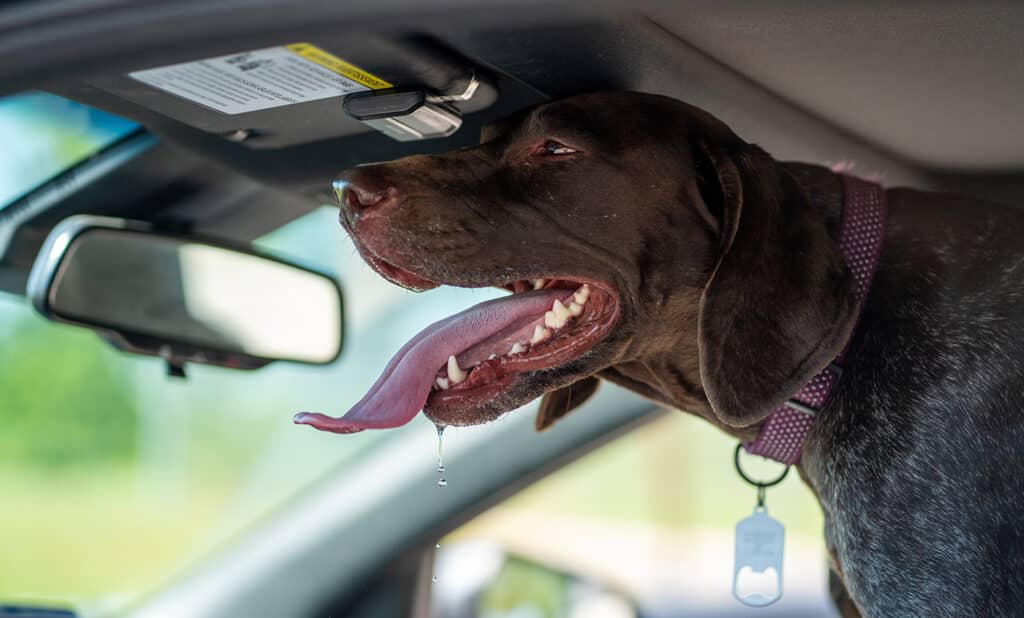
Frostnip is a first degree (superficial) cold injury that does not cause tissue damage. Frostbite is a third degree (deep) cold injury causing localized tissue damage. Areas most commonly affected are the ears, paws, scrotum and tail. Cold injuries are caused by extreme and/or prolonged exposure to low temperatures.
Signs include swollen, red, painful, hard and/or pale skin. In later stages, the pet may lose skin and hair in the affected area. Prevention is best; make sure you monitor the pet and do the Snout-to-Tail Assessment after each hike to make sure there aren’t any ice crystals, snow etc. in the pads, paws and genitals.
Actions for survival: Frost nip parts should be warmed slowly with wet warm towels. Do not squeeze or rub the affected area as this will be extremely painful for the pet. Frostbite requires immediate attention by a veterinarian or emergency animal hospital to prevent further pain, ward off infection and to assess possible permanent tissue damage. Keep body parts frozen during transport.
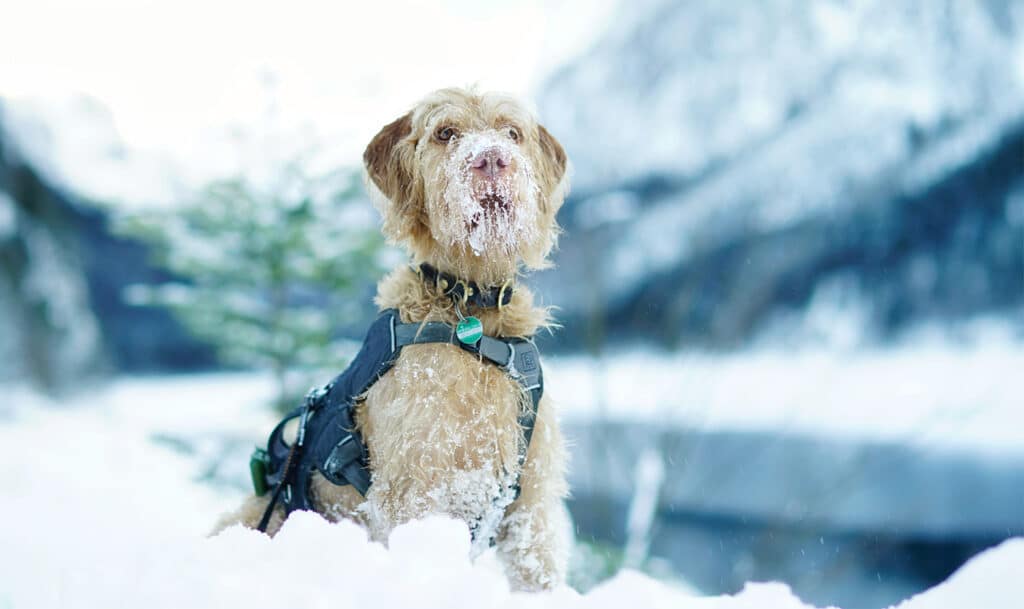
Extremity Injuries
Limb injuries can include anything like abrasions on the paws, compound fractures, scratches, and scrapes on the legs and paws. Most of these injuries are preventable with proper care and handling of your dog.
The most common are injuries from over exertion such as strains, sprains, muscle and tendon tears, swelling, etc. Signs may include limping, favoring one limb over another, obvious pain or limited range and use of movement of extremity.
First aid objectives for cuts, lacerations or abrasions is simple wound care and bleeding protocols. For sprains, strains, fractures or other skeletal injuries you need to immobilize, reduce activity and make arrangements to transport to the nearest animal hospital or veterinarian.
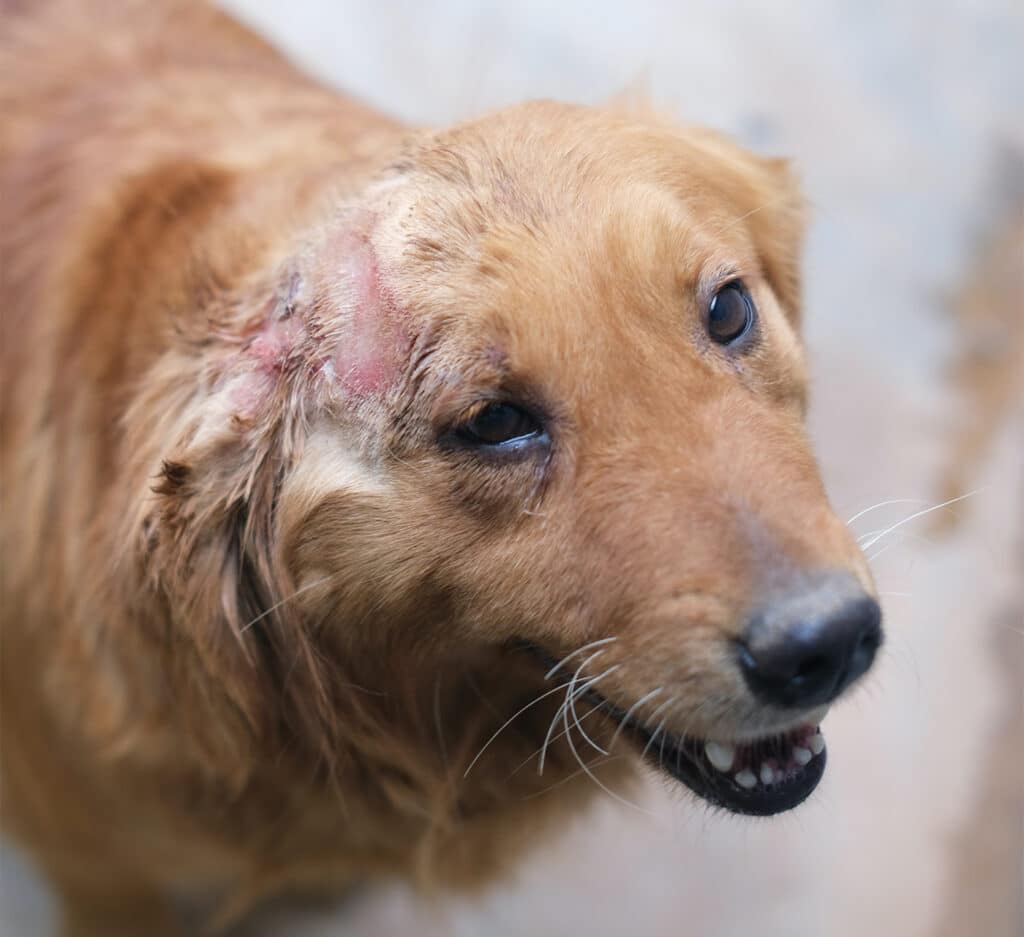
Wounds & Trauma
Includes bites, cuts, lacerations, punctures, falls or blunt force trauma. First aid actions include muzzling, restraint, controlling bleeding and treating for shock. Depending on the severity of the injury, the pet may need veterinary care, including stitches and medication to treat possible infection. X-rays could be warranted if any sudden blunt trauma was involved.
Bleeding injuries can be life threatening and require immediate attention. Actions for survival include: restraint and muzzle, elevation if it does not aggravate any injuries, direct pressure, constricting hand/band, bandaging and transporting to the nearest animal hospital or veterinarian.
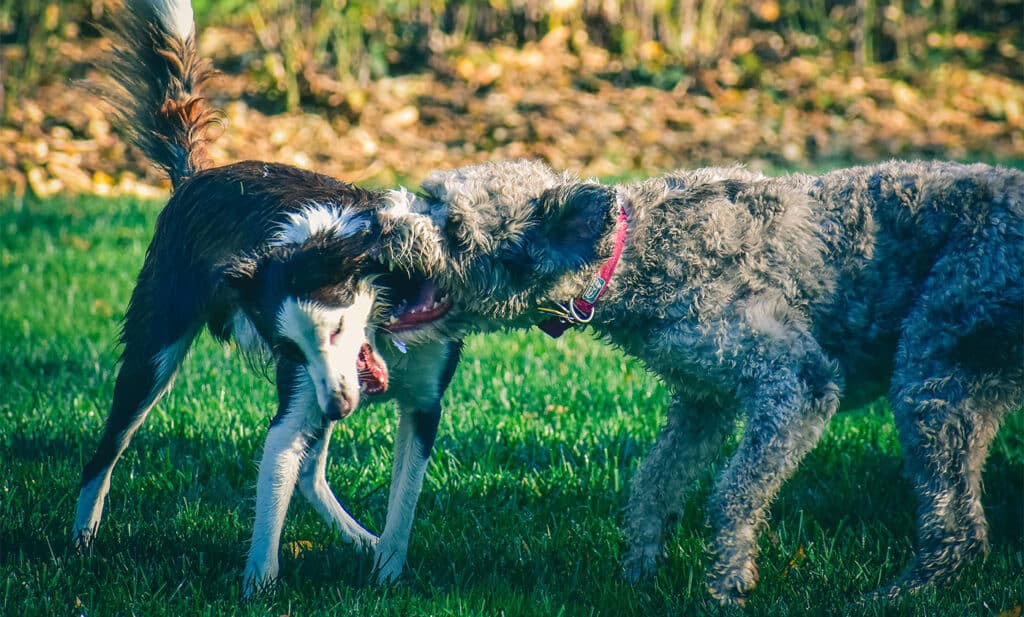
Have questions regarding what to do in first aid situations for your pet? Contact your local Smoochie Pooch dog groomer or veterinarian for more information.
Article information provided by Pet Tech Productions


